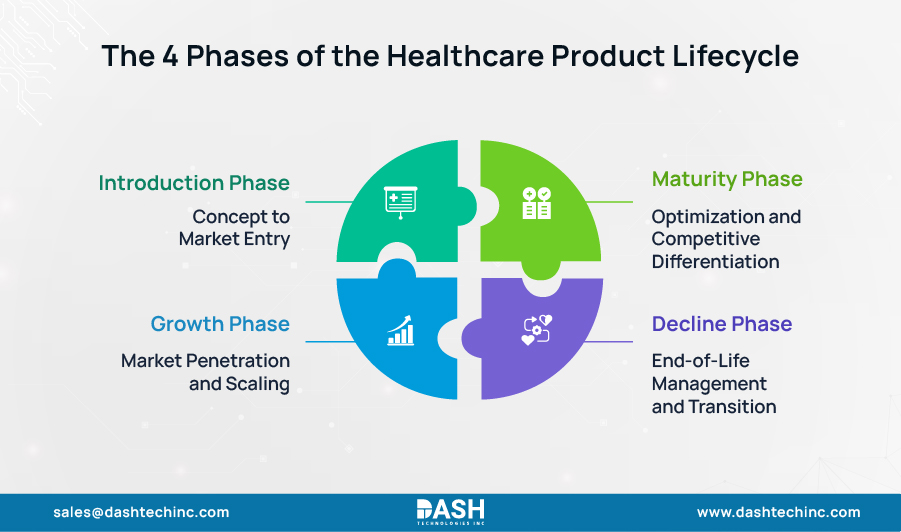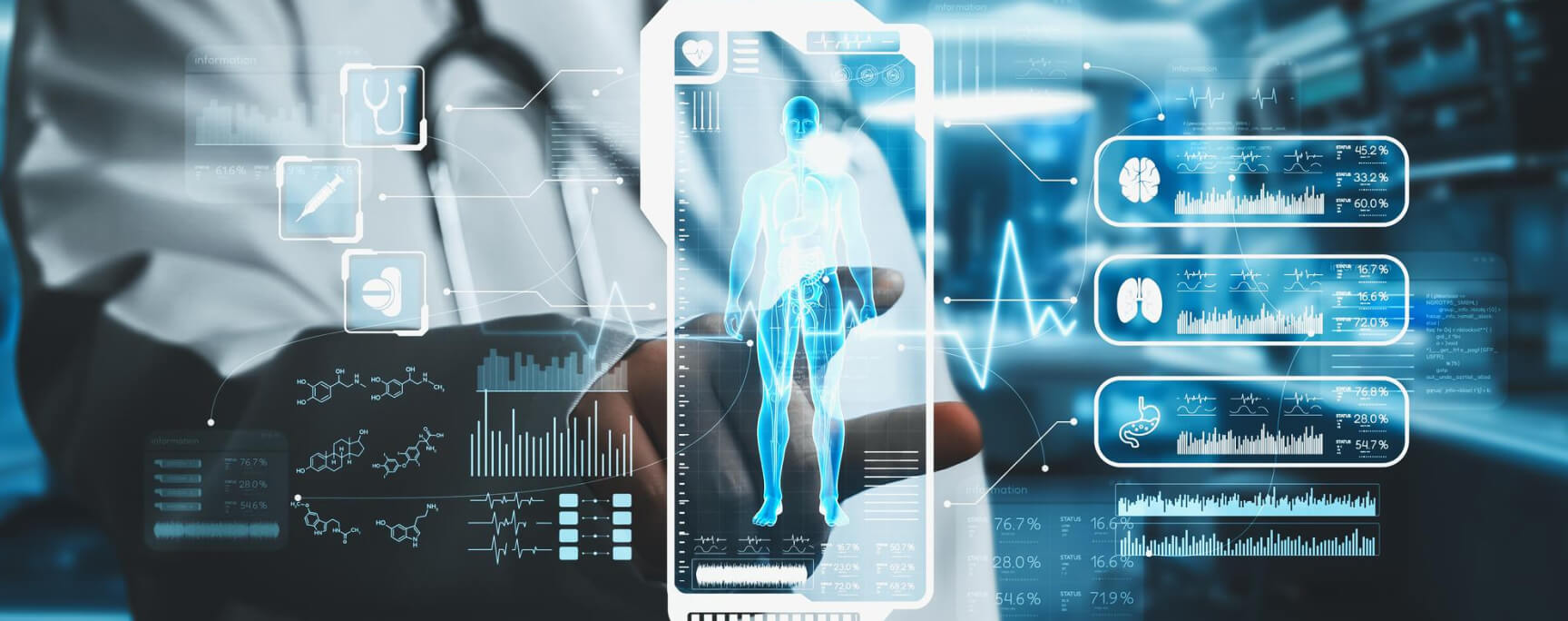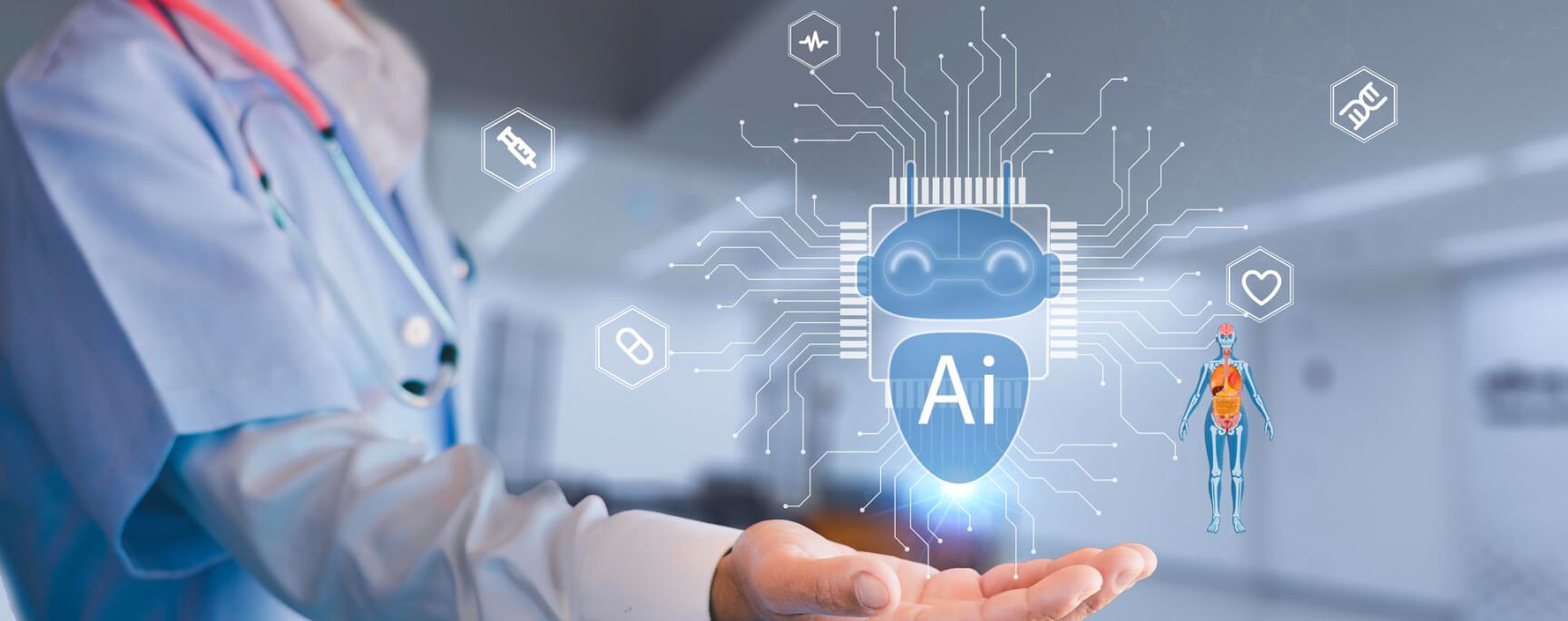Stages of Product Life Cycle Management in Healthcare Engineering
Product Life Cycle Management (PLM) has become increasingly important in the healthcare engineering field, offering a strategic approach to managing the entire life cycle of medical devices, pharmaceuticals, & digital health solutions. In an industry where regulatory compliance, patient safety, & innovation must coexist, PLM services serve as the strategic backbone that enables healthcare organizations to guide complex development pathways while also maintaining a competitive edge.
Understanding Product Life Cycle Management in Healthcare
Product life cycle management (PLCM) refers to the process of managing a product’s life cycle, from research and development (R&D) through commercialization, market launch, market presence, to product discontinuation. In the medical products industry, this would include regulatory affairs, quality, chemistry manufacturing and controls (CMC), as well as clinical operations, among other functions.
The healthcare sector faces distinctive challenges that make PLM services particularly critical. Medical devices are becoming increasingly complex and networked within healthcare delivery systems, requiring developers to recognize potential faults, protect patients, and preserve comprehensive documentation for regulatory compliance and continuous improvement. Additionally, the industry operates under intensifying cost pressures, ongoing integration requirements with hospital information systems, regulatory compliance mandates, & increasing demand for all-in-one technology devices, which in turn increases demand for digital product engineering services.
The Four Core Phases of Healthcare Product Life Cycle Management

Introduction Phase: Concept to Market Entry
It is the foundation of engineering product development, or in this case, healthcare product development; the entire process, from the initial thought of a product to its final introduction to the market. The introduction stage is the concept phase, which typically involves setting product requirements, conducting feasibility analysis, and prototype development while adhering to all the necessary safety and regulatory guidelines.
R&D activities within this phase include designing medical devices, creating feasibility studies and prototypes, and testing. All of these functions are necessary before any regulatory submissions can occur. Companies can improve their time to market by 10-15% through the use of PLM services at this phase in the process, resulting in faster product delivery & higher revenue.
Product engineering services are also critical during the introduction phase, particularly with respect to digital product engineering services, which include the application of advanced simulation, modeling, and virtual testing environments. This can enable healthcare companies to “find and fix” problems early on, which can reduce downstream costs and regulatory risk.
Growth Phase: Market Penetration and Scaling
The growth phase is when healthcare products start to gain market acceptance and witness rapid adoption among healthcare providers and patients. In this stage, companies work on scaling up manufacturing capabilities, expanding market reach, and making iterative improvements to product features based on real-world feedback and usage data.
The growth phase is marked by a balance between the increasing demand and supply chains, allowing the healthcare company to be more certain of its production planning and inventory levels. Awareness and adoption by the consumer grow significantly during this stage, often at an exponential rate, and in turn, the overall market size increases. This provides opportunities for healthcare organizations to reinvest growth revenues into product improvements, expansion to new markets, and work on next-generation products.
Software product engineering becomes increasingly important during this phase as connected medical devices require regular updates, security patches, and feature enhancements based on real-world usage data. PLM services help organizations manage the complexity of scaling operations while maintaining product quality and regulatory compliance across expanded production volumes.
Optimize Every Stage of Your Product Lifecycle
Leverage our end-to-end product engineering expertise to streamline development, ensure compliance, and accelerate time-to-market.
Explore Our ServicesMaturity Phase: Optimization and Competitive Differentiation
At this point, healthcare products have reached market saturation. In addition, there will be some increased competition due to the availability of alternative solutions and products. At this stage, the organization should optimize its operations and identify ways to cut costs while also differentiating itself from the competition.
In the maturity stage, healthcare companies with mature PLM processes experience data reuse, product variation streamlining, and shortened time-to-market for complementary products. The engineering product development tasks involve a focus on incremental innovations, cost optimization, and platform extension that add value to their existing products.
Digital product engineering services are employed to meet the competitive pressures of analytics, artificial intelligence (AI) deployments, & user experience (UX) improvements. Organizations must embrace sophisticated PLM services to handle complex product portfolios, orchestrate engineering changes across multiple variants, and ensure regulatory compliance in continuous improvement initiatives.
Decline Phase: Transition and End-of-Life Management
The decline phase encompasses the systematic management of product retirement, legacy system transition, and end-of-life planning. For the healthcare sector, this phase is very crucial because of patient safety issues, regulatory requirements for post-market surveillance, and the essential need for maintaining continuity of care across product transitions.
The decline phase includes thorough planning for device decommissioning, data portability to the replacement product, and all necessary transitional measures to avoid disrupting customer use and associated care delivery. Product engineering services during this stage include tailoring specific migration instruments, ensuring backward compatibility with the legacy product, and securely transferring data to the new platform.
PLM services may also be utilized in the retirement of products. These services manage the transition while preserving full documentation for the product to support regulatory needs and possible future liability issues. Environmental, security, and all necessary customer transition aspects must be considered at this point as well.
Key Benefits of PLM Implementation in Healthcare Engineering

Enhanced Regulatory Compliance and Risk Management
Product engineering services can enhance regulatory compliance by helping companies centralize and automate design controls, risk analysis, and traceability throughout the product life cycle. Current platforms include ISO 14971 medical device framework, streamlined automated compliance reporting, and complete Design History Files (DHF)/Device Master Records (DMR) tracking to help healthcare companies simplify regulatory interactions, minimize risk of non-compliance, and speed up time to approval in global markets, all while automating regulatory changes and updates.
Improved Collaboration and Cross-Functional Integration
Healthcare product life cycle management provides collaborative work environments for multidisciplinary teams, enabling mechanical, electrical, and software engineers to work together with synchronized data shared with manufacturing, quality, and regulatory teams. Digital product engineering services utilizing shared digital twins and virtual prototyping results in less miscommunication, fewer design iterations, and accelerated time-to-market for critical healthcare products.
Cost Reduction and Operational Efficiency
Healthcare organizations that undertake product life cycle management services achieve substantial cost savings through automated operations, data redundancy elimination, and rationalized work processes. PLM minimizes resource utilization, decreases development rework, and reduces manufacturing setup changes by performing early design validation, facilitating design reuse, process standardization, and improved supplier collaboration to achieve long-term operational savings.
Conclusion
Product Life Cycle Management (PLM) in health engineering is imperative in guiding medical product development, regulatory compliance, and competitiveness. With digital health, PLM systems promote innovation, improve patient outcomes, and streamline operations. PLM will, in the future, further develop with trends such as personalized medicine, sustainability, and regulatory harmonization. Businesses that change their PLM strategies to these trends will be competitive and improve the world’s patient care.
Partner with Dash Technologies’ digital product engineering services that accelerate your medical device development and ensure regulatory compliance. Our expert team delivers end-to-end PLM solutions, from concept to market launch. Contact our healthcare engineering specialists for a free consultation and discover how we can streamline your product development lifecycle.
About Dash

Dash Technologies Inc.
We’re technology experts with a passion for bringing concepts to life. By leveraging a unique, consultative process and an agile development approach, we translate business challenges into technology solutions Get in touch.







